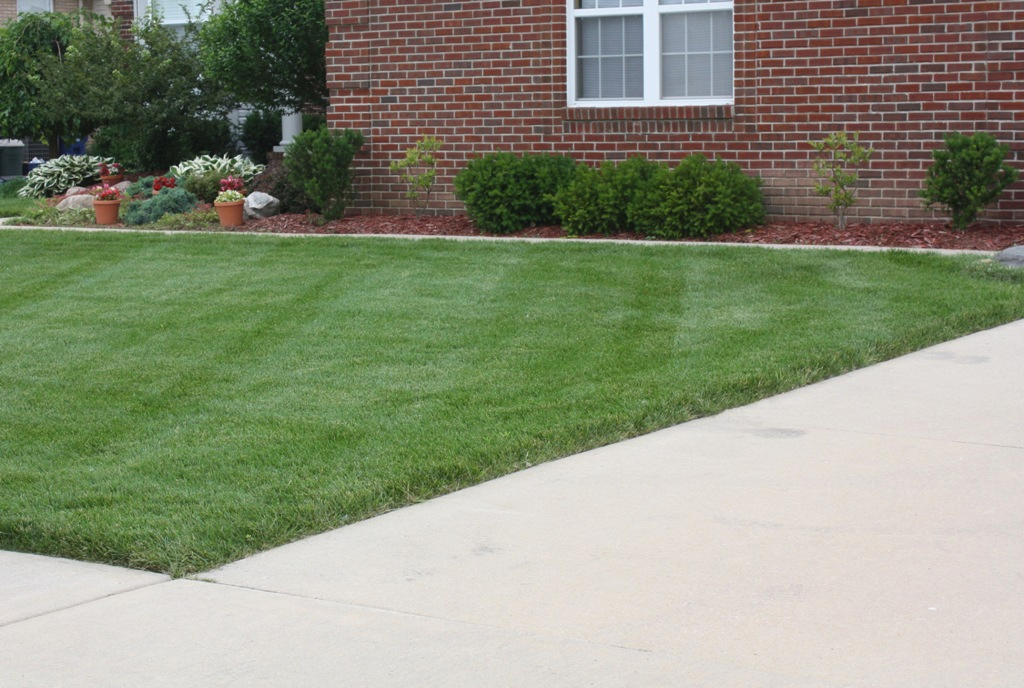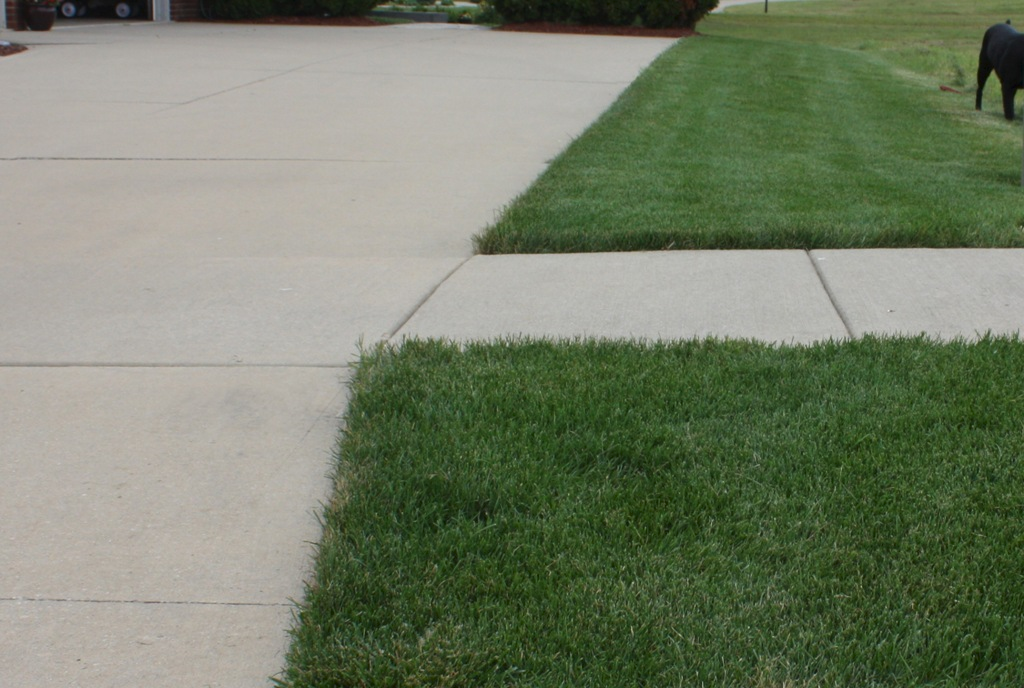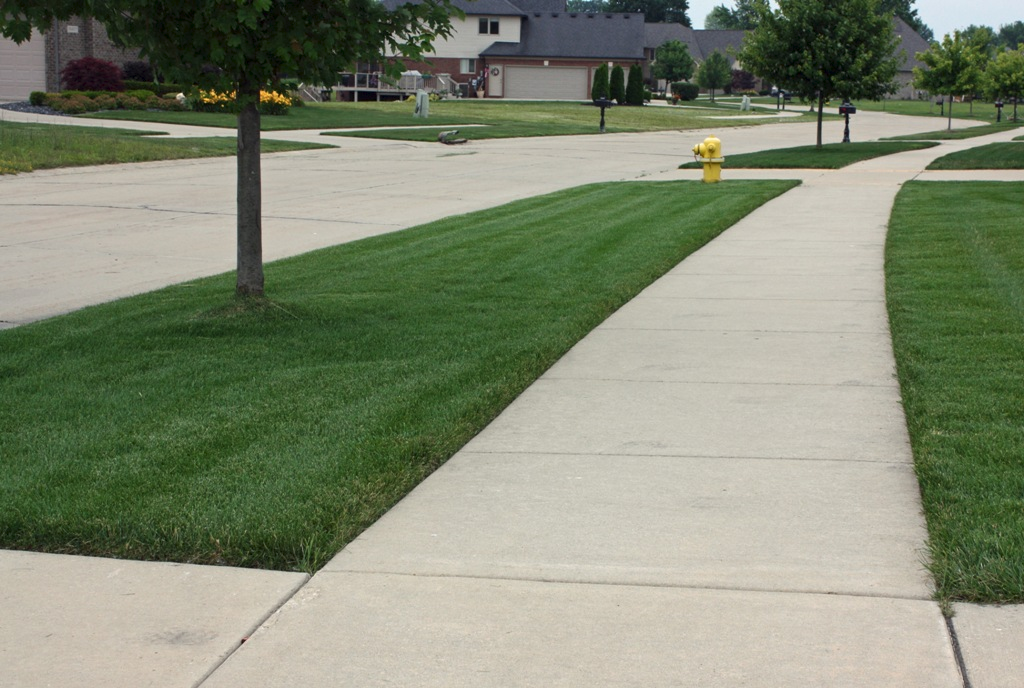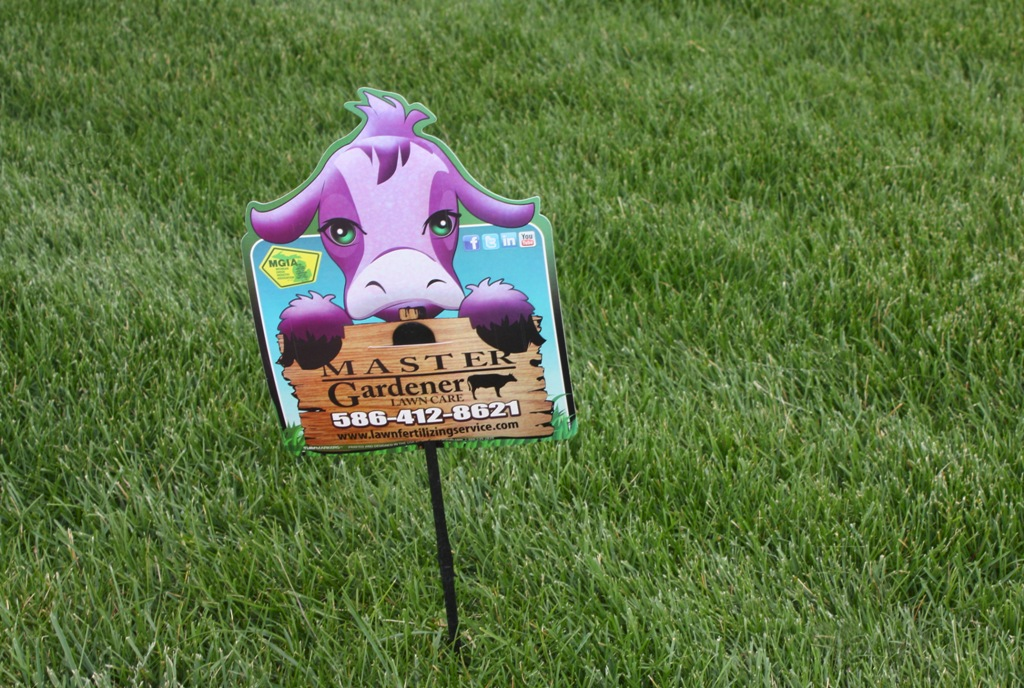Welcome to Master Gardener Award-Winning Lawn Fertilizing Service operating in Macomb County, Michigan
Monthly Archives: April 2011
Lawn Fertilizing Service in Macomb, Oakland and Berrien County Michigan.  Award-Winning Lawn Fertilizing Service by a Master Gardener.  Master Gardener Lawn Care’s lawn fertilizing service has come across this outstanding article by Terry Davis from Michigan State University and we would like to share it with our clients in Macomb, Oakland and Berrien County, Michigan. Understanding lawn grub control products Which products work for grubs and when to use them on your lawn Published April 13, 2011 Terry Davis, Michigan State University Extension, Department of Entomology It is that time of year again. Lawns are starting to green up nicely, especially with the occasional rains. However, I have noticed patches in some lawns that are not turning green. Sometimes, a flock of birds will be observed working around the dead patches. These patches, in non-irrigated lawns, may be due to grubs. Make sure the problem is grubs Before doing anything to control grubs or even to re-seed an area that is not starting to turn green, it is important to make sure that the problem is indeed grubs. If you see a dead patch, dig up a few shovelfuls of soil at the edge of the bare spot and look for 1-inch long, C-shaped grubs. These are more than likely the larvae of European chafer if they are found in non-irrigated turfgrass. European chafer can devastate a lawn with little warning because the adult beetles are not visible to the average person. They do not become active until sunset during late June and early July and can easily be missed as they move out of the soil and congregate in trees. Since they move back into the grass and lay eggs about 11 PM, the average person would never notice them. European chafer grubs can now be found in all of Michigan’s Lower Peninsula. Japanese beetle grubs also feed on turf roots in home lawns, but they are not as much a problem as European chafer. Japanese beetles like to lay their eggs on irrigated turf like golf courses and athletic fields. They will live in home lawns but rarely cause turf damage because they avoid dry soils. Both Japanese beetle and European chafer lay most of their eggs in July. The eggs hatch about 10 days later. It is important to realize that healthy turf, especially if there is plenty of rain in the spring and fall can support a grub population of 5 grubs per square foot with no visible turf damage. A lawn should be mowed at 3.5 to 4.0 inches in height and properly fertilized to maximize root growth. If the grub population is high, or if there is a history of damage in an area, it may be necessary to consider using chemicals for grub control. What you’ll find on the store shelves I went to several of the local lawn and garden centers in the Lansing area to see what kinds of products are available that specifically claim they will work to control grubs. The number of products available that listed grubs on the bag ranged from five to nine depending on which store I checked. The profusion of different products can be rather mystifying. I found three types of products that indicated on the bag that they would control grubs: 1) preventive products, 2) curative products and 3) the occasional product that the manufacturers would like to think might control grubs (but won’t). Curative compounds should be applied when the grubs are present and active. Approaching grub control from the curative standpoint avoids unnecessary applications of chemical, but is not as effective as the preventive products. Preventive compounds must be applied at the time of egg hatching or when grubs are small to be effective. The first critical issue is to determine what active ingredient the product contains by looking at the label. Look on the bag at the lower right or left corner to determine what and how much active ingredient is in the product. PREVENTIVE products to prevent grubs next fall (2011) and spring (2012) Products containing imidacloprid, thiamethoxam, halofenozide, chlothianidin or chlorantraniloprole WILL NOT CONTROL GRUBS IN THE SPRING. They are preventive products that work very well on newly hatched grubs, but do not work well for large grubs. There are different recommended timings for application depending on the ingredient you buy. Although the bag often says apply anytime from May to August 15, it is highly recommended that products containing imidacloprid, thiamethoxam, clothianidin or halofenazide be applied and irrigated into the soil during June or July. If applied in the spring or fall, they will have little or no effect on the grubs currently in the lawn and may degrade slightly by the time the grubs hatch-out in late July. Preventative applications should target the newly hatched grubs. Therefore, it’s best to apply preventative products prior to July 15 so that rainfall can incorporate the material into the soil to control the grubs for that fall and the following spring. There is a new active ingredient called chlorantraniliprole that is also very effective in preventing grub problems, but it is less water soluble than the preventive compounds mentioned above. Since it takes quite a bit longer to move down to where the grubs will be, it is best to apply a product containing chorantraniliprole in late April or early May for it to be most effective when the grubs hatch in July and August. CURATIVE products: What to use in the spring or fall Any product that contains carbaryl (Sevin) or trichlorfon (Dylox) will work well when applied in the spring (from March to mid-May) or in the fall (September 1 to November 1). Our research has indicated that carbaryl has been a little more consistent on European chafer grubs than trichlorfon. Both compounds work equally well on Japanese beetle grubs. These are considered curative compounds as opposed to the preventive compounds in the previous section above, and will kill the grubs currently in the ground. It is necessary to irrigate after applying any curative product to get the chemical to the grubs. Run a lawn sprinkler for at least 60 minutes over treated areas (fill a bucket to 1/2 inch). It will take 10 to 14 days for the grubs to begin to die. One trichlorfon product called Bayer Advanced 24 Hour Grub Control seems to indicate by the name that it will kill grubs in 24 hours. However, I doubt that any of the insecticides will kill grubs in the soil in much less than 5 days unless there is a very heavy rain and very warm temperatures the day of application. Do not apply any curative compounds after May 15 as the grubs stop feeding in late May. These “curative” compounds will typically give 60 to 70 percent control of grubs. If grubs are present in a lawn in high numbers, it is advisable to wait for a week after applying a chemical control before reseeding. DO NOT USE THESE for grub control: Products that will not control grubs at any time DO NOT USE products containing ONLY lambda-cyhalothrin, gamma-cyhalothrin, bifenthrin, deltamethrin, cyfluthrin or permethrin for grub control. PRODUCTS CONTAINING ONLY THESE INGREDIENTS WILL NOT WORK FOR GRUB CONTROL when applied to the soil surface as the actie compound will bind with organic material and will not move down to where the grubs are feeding. These products work well for above-ground feeding insects that live on the grass leaves or soil surface but not for insects that feed on the roots. There are a few combination products that include one of the above mentioned chemicals and imidacloprid or clothianidin. These products will work because they include a product that will move down to where the grubs are feeding. But I did find one product that said it would control grubs that contained only gamma-cyhalothrin. We tested this product in 2006 and the results were the same as doing nothing at all. A final note about combination products There are several turf products containing two active chemicals: a grub control product and a surface insect control product. They will contain one of the preventive grub compounds and one of the compounds mentioned in the category above as ineffective for grubs. These will work fine for grubs if used as described for the preventive grub control. But if there is no need for surface insect control, it would be best not to use a combination product. There are many insects that are predators of other insects, and there are many species of insects and arthropods that do beneficial things to turf that are all very negatively impacted by unnecessary insecticide applications. In summary Check the bag to determine what active ingredient the product contains. Do not use products containing only lambda-cyhalothin, gamma-cyhalothrin, bifenthrin, deltamethrin, cyfluthrin or permethrin for any phase of grub control. Do not use preventive compounds such as halfenozide, thiamethoxam, clothianidin, or imidacloprid now. Use them in June or July to control grubs that would be damaging turf in the fall. The preventive compound chloraniliprole should be applied in late April or Early May to control grubs that would be damaging turf in the fall, as it will take longer for the material to move to where the grubs will be feeding in July. To kill grubs in the spring Â(or fall), use carbaryl or trichlorfon and irrigate. Always wear rubber gloves and rubber boots when applying insecticides to turfgrass. Make sure to irrigate the lawn with at least a half inch of water and allow the grass to dry before allowing anyone (or pets) into the treated area. Store insecticides products in a locked cabinet inaccessible to children. Products available Below is a short list of products now being sold for grub control as of April 6, 2011 in the four stores I checked in Mid-Michigan. Gardentech Sevin Lawn Insect Granules carbaryl 2.0% Apply in spring or fall to active grubs. (local distributors name) Lawn Insect Control and Fertilizer Carbaryl 4.3% and fertilizer Apply in spring or fall to active grubs. Bayer Advanced 24 hr Grub Killer Plus trichlorfon 9.3% Apply in spring or fall to active grubs. Scotts Grub-Ex chlorantraniliprole 0.08% Apply between April 15 and May 15 for best results. Bonide Grub Beater imidacloprid 0.5% Apply between June 1 and July 15 for best results. Bayer Advanced Season Long Grub Control and Turf Revitalizer imidacloprid 0.25% and fertilizer Apply between June 1 and July 15 for best results. Bayer Advanced Season Long Grub Control imidacloprid 0.25% Apply between June 1 and July 15 for best results. Bayer Advanced Complete Insect Killer cyfluthrin 0.05% and imidacloprid 0.15% Apply between June 1 and July 15 for best results. Spectracide Triazicide Insect Killer Once and Done Granules gamma-cyhalothrin 0.05% Will not kill grubs at any rate.  Master Gardener Lawn Care, provides an organic based lawn fertilizing service in Macomb Township, Shelby Township, Washington Township, Chesterfield Township, New Baltimore, Clinton Township, Warren, Sterling Heights in Macomb County, Rochester Hills, Troy Royal Oak, Berkley Huntington Wood in Oakland County and St Joseph, Benton Harbor, Coloma, Steve in Berrien County, Michigan. Master Gardener Lawn Care was established in 1991 and provides lawn fertilizing service, core aeration, weed control, soil testing and insect control. For more information on our lawn care and lawn fertilizing services or to request a free lawn care analysis please visit our Free Lawn Fertilizing Service Estimate page on the mastergardenerlawncare.com website
Categories
Recent Posts
Lawn Care Tips
-
Under the Snow 2014 – Part 1
Lawn Care, Lawn Fertilizing Service, Turf Tip When the Michigan snow melts in the next few weeks...









